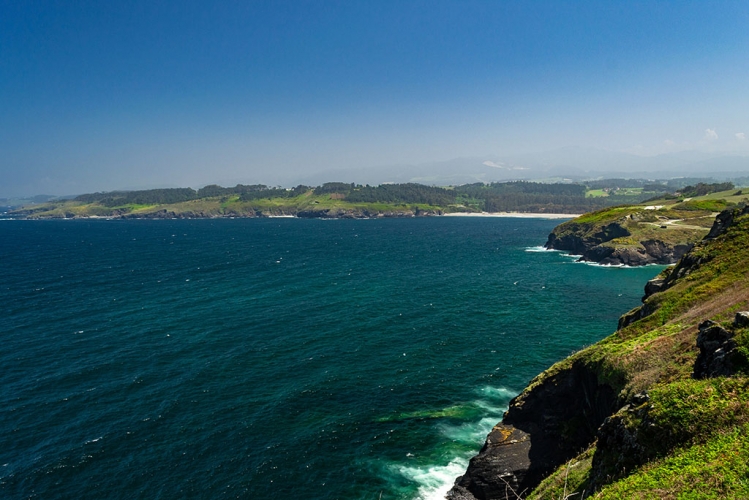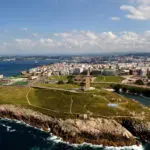
Asturias remains one of Spain’s best-kept secrets—but not for long. This lush, coastal region in northern Spain is steadily gaining recognition among Camino walkers, and it’s easy to see why. With its breathtaking landscapes, charming towns, and a coastline that remains remarkably unspoiled, Asturias offers a Camino experience that feels both authentic and deeply rewarding.
Walking the Camino del Norte through Asturias means threading together a series of idyllic seaside villages and coastal hamlets. To your right: golden beaches and the ever-changing blue of the Cantabrian Sea. To your left: rolling green hills, misty peaks, and flower-strewn meadows of the Asturian hinterland. The route is rich in contrast and beauty, with gentle sea breezes, ancient footpaths, and dramatic cliffs shaping each day’s journey.
There’s something uniquely appealing about coastal walking, and when you pair that with characterful hotels, genuinely warm hospitality, and some of the most exciting regional food in Spain, it becomes clear why this region is becoming a Camino favourite. Asturias is famed for its cider culture, fresh seafood, and traditional dishes that reflect the richness of the land and sea. In fact, Greenpeace has called the Asturian coastline the best-preserved in all of Spain—a title that speaks volumes about the region’s natural integrity and responsible tourism.
To fully enjoy this stretch of the Camino, you’ll need at least two weeks. Fortunately, that time allows for a well-earned rest day or two in Oviedo, the regional capital. Located slightly inland, Oviedo is a green and gracious city with a strong cultural identity and deep historical roots. It’s a place worth lingering in. The compact old town is full of elegant squares, historic buildings, and excellent restaurants—and at its heart stands Oviedo Cathedral, a key pilgrimage site in its own right.
The cathedral is also where the Camino Primitivo begins. Known as the Original Way, it’s the oldest of all the Camino routes and follows the path taken by the first documented pilgrims to Santiago in the 9th century. Rugged, beautiful, and less travelled, the Primitivo appeals to those looking for a quieter, more challenging Camino through mountainous landscapes and timeless rural villages.
From Oviedo, you have a choice to make—continue west along the picturesque Asturian coastline on the Camino del Norte, or turn inland to take on the Camino Primitivo. Both routes eventually bring you to Santiago de Compostela, but each offers a different kind of journey: one shaped by the rhythm of the sea, the other by the strength of the hills.
Whichever path you choose, Asturias offers a deeply memorable Camino experience—unspoiled, underexplored, and absolutely worth discovering.

Ready for your adventure in Asturias? Consider booking our Cantabria and Asturias Coast Walking Tour. If you have any questions, please don’t hesitate to contact us.








